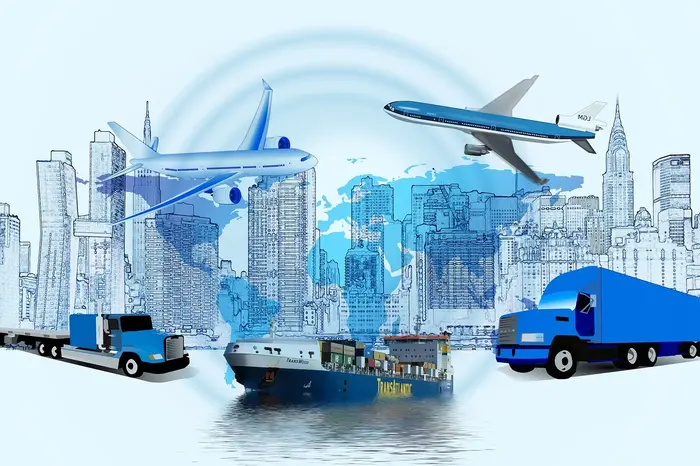Shipsy Review: Competitor Comparison
Overview
With its headquarters in India, Shipsy uses a cloud-based platform to provide businesses of all sizes with their solutions. The suite aims to improve supply chain efficiency by giving control and visibility in real-time. Even though Shipsy has a wide range of features, it is important to assess them objectively to see if they meet your specific needs.
Shipsy’s product offerings
Shipsy’s offerings include several key modules:
Ships Procure: Connects businesses with verified vendors and helps with sourcing and price discovery.
Shipsy Track: Provides real-time tracking across different modes of transport.
Shipsy Logistics: Offers comprehensive LMS for managing warehouses, optimizing routes, and automating workflows.
Shipsy Transport: Connects businesses with a vast carrier network for efficient rate comparison and shipment booking.
Ships 3PL: Serves 3PLs by providing warehouse management tools, inventory control, and order fulfillment.
Customer Reviews on Shipsy
Shipsy’s cloud-based platform offers a comprehensive suite of logistics management tools designed to streamline operations for businesses of varying sizes. Here’s a closer look at Shipsy’s strengths and potential areas for improvement based on user reviews gleaned from platforms like Capterra and G2.

Shipsy vs competitors: product features comparison
| Feature | Searates | GoComet | Shipsy |
| Container tracking | |||
| Freight index for benchmarking real-time freight rates | |||
| Vessel scheduler | |||
| Logistic document manager | |||
| Predictive ETA using multiple sources (Carrier, AIS and live vessel data) | |||
| Advanced insights into carrier performance | |||
| Automated shipment tracking from the shipper till the end consignee | |||
| Accurate AI-driven port intel | |||
| Proactive BL upload and auto-tracking | |||
| Smart tracking to track non-traceable shipments | |||
| Single platform from booking to invoice reconciliation |
Shipsy’s Strengths
- Enhanced Visibility with Shipsy Track: One of Shipsy’s key strengths is real-time shipment tracking across all transportation modes (road, air, ocean). This allows for end-to-end visibility, providing users with the ability to pinpoint the exact location of their goods at any given time. However, some reviewers suggest limitations beyond basic location data.
- Unified Platform for Streamlined Operations: Shipsy offers an all-in-one platform encompassing procurement, tracking, logistics management, transportation management, and solutions specifically designed for 3PLs. This unified approach can significantly streamline operations by eliminating the need for multiple disjointed software solutions.
- Scalability to Accommodate Growth: Shipsy’s modular architecture allows businesses to adopt specific functionalities they need and add on additional modules as their requirements evolve. This scalability is particularly valuable for businesses experiencing growth or those with fluctuating logistics needs.
Potential Areas for Improvement
- Expanding from myopic location tracking: Basic location data only tells where the shipment is, not important details like estimated arrival time (ETA), potential delays, or milestones like customs clearance. This lack of transparency makes it difficult to proactively manage your shipments and plan accordingly. The platform could integrate with carriers to offer features like real-time ETAs, congestion alerts, and predictive notifications for delays alongside tracking events like customs clearance, port arrival, and final delivery would provide a much clearer picture of the shipment’s journey.
- Implementation Complexities: A recurring theme in user reviews is the challenge associated with implementing Shipsy initially. A streamlined onboarding process with dedicated support staff could significantly improve the user experience and minimize disruption during the transition phase.
- Customization Limitations: While Shipsy offers a comprehensive set of features, some users report limitations in tailoring workflows to address highly specific business needs. Enhancing the platform’s customizability would allow businesses to leverage Shipsy’s functionalities in a way that perfectly aligns with their unique processes.
- Integration Concerns: A few users encountered challenges integrating Shipsy with existing ERP systems. Robust API integrations and readily available technical support are crucial for ensuring a seamless flow of data between Shipsy and other enterprise software solutions.
Recommendations:
Having explored Shipsy’s offerings and potential areas for improvement, let’s delve into key features a comprehensive logistics management platform should possess to address these gaps and deliver an exceptional user experience.
- Proactive service platform: Traditional features like shipment tracking and document management are no longer enough. Today’s software needs to be intelligent, offering features like real-time disruption alerts based on geopolitical issues such as port congestion, vessel scheduling, proactive billing, automated shipment tracking, advanced insights into cost analysis for informed decision-making, and supplier risk management to proactive navigation of logistic uncertainties.
- Onboarding: A clean and intuitive interface with clear navigation and easy-to-understand functionalities minimizes training time for new users and reduces the overall learning curve. Further, a streamlined onboarding process with comprehensive training materials, readily available tutorials, and dedicated customer support ensures a smooth transition for new users.
- Enhance Configurability for Tailored Workflow Management: A platform should allow businesses to configure workflows at a granular level within each module. This could include customizing data fields, defining approval processes, and automating specific tasks based on pre-defined triggers. alongside, offering a catalog of pre-built templates for common industry-specific workflows can be a valuable time-saving feature with accessibility to modify these templates as per the users’ needs
- Ensure Seamless Integrations with Existing Systems: A platform should offer robust and well-documented API integrations with a wide range of popular ERP systems and other business software solutions. Enabling pre-built connectors for commonly used systems can further simplify the integration process and minimize the need for technical expertise on the user’s end.
- Prioritize Exceptional Customer Support for a Smooth User Experience: A dedicated support team with knowledgeable representatives readily available to address user queries and troubleshoot issues promptly. This includes offering multiple support channels like phone, email, and live chat to cater to user preferences.
To scale up to double-digit supply chain savings, explore GoComet services to streamline your operations. GoComet has immense potential to be your strategic ally in managing the complexities of your supply chain. Take the free demo or 15-day trial – see the difference!





